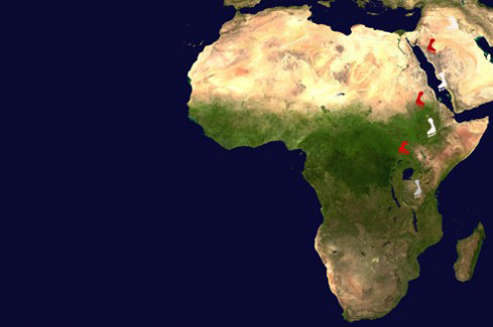During World War II, when the Russians ruled the eastern part of Poland, and the western part was ruled by Germans, Polish citizens were evicted from their native lands and deported to distant and unfriendly to man areas. One of these deportations took place in the beginning of 1940, when the Russians deported over 300 000 Poles to Siberia, where they had to stay there for the rest of their lives. Russian plans were quickly verified by the German-Soviet war. As it turned out, it was a unique opportunity to get away from the Russian trap. Escape was not easy – Poles had to walk hundreds of thousand kilometres before they reached Africa and freedom. The movie entitled ‘The Way Back’ tells the story of some who did.
Poles in Africa settled in Tanzania and Uganda, where they founded a thriving housing 22. The living conditions were so bad that many people died and those who survived returned to Europe after the war. Remnants of Poles in these areas can mainly be found in cemeteries. Dr. Hubert Chudzio came to these cemeteries, and in 2009, along with a group of students, he held a scientific mission there. The purpose of the mission was the renovation of the three largest cemeteries in Tangiers, Masindi and Koji, where the latter two had survived in reasonable condition. Most jobs in the area required a cemetery in Koji, and it was there that the work associated with the reconstruction began. Money for this purpose came from various sources, including the same Siberians who once lived in those areas. The result of the work was to make 97 concrete crosses, restored monuments, alleys and renovated walls around the cemetery.
To be able to preserve the cemetery’s splendor , it was decided that a school in Koji, under the name of Polish survivors, was to be built. The monument resembles the fate of Polish exiles, and is part of the future of Polish-Uganda co-operation.
In late October and early November 2012 in Uganda, an international conference organized by the Pedagogical University in Krakow took place. The theme of the conference were Polish survivors in East Africa between the years 1942-1952. During the meeting, the renovated cemetery in Koji was opened. The conference was attended by representatives of various organisations such as prof. Andrzej Kunert of the Defence Council of Struggle and Martyrdom, and Dr. John Ciechanowski of the Office for War Veterans and Victims of Oppression. The total number of participants includes about 40 people from different countries.
Source: Magazyn Polonia
Photo © Wikipedia


